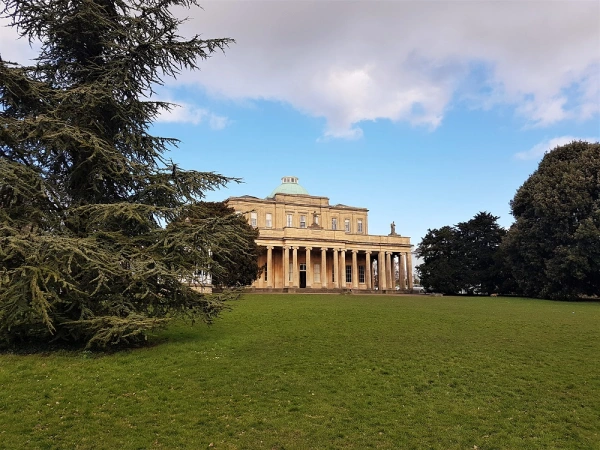The Basilica of Saint-Denis to the north of Paris has been top of my Parisian bucket list for a good 20 years and I was determined to finally visit it last summer.
The magnificent basilica is the resting place of almost all the French kings and queens, with 43 kings, 32 queens and more than 60 minor royals buried within its walls.
Name a French monarch or consort and you’ll probably find them in Saint-Denis – Louis XIV, Henri IV (below), Catherine de Medici, Louis XVI and Marie Antoinette are among the famous royals laid to rest here.
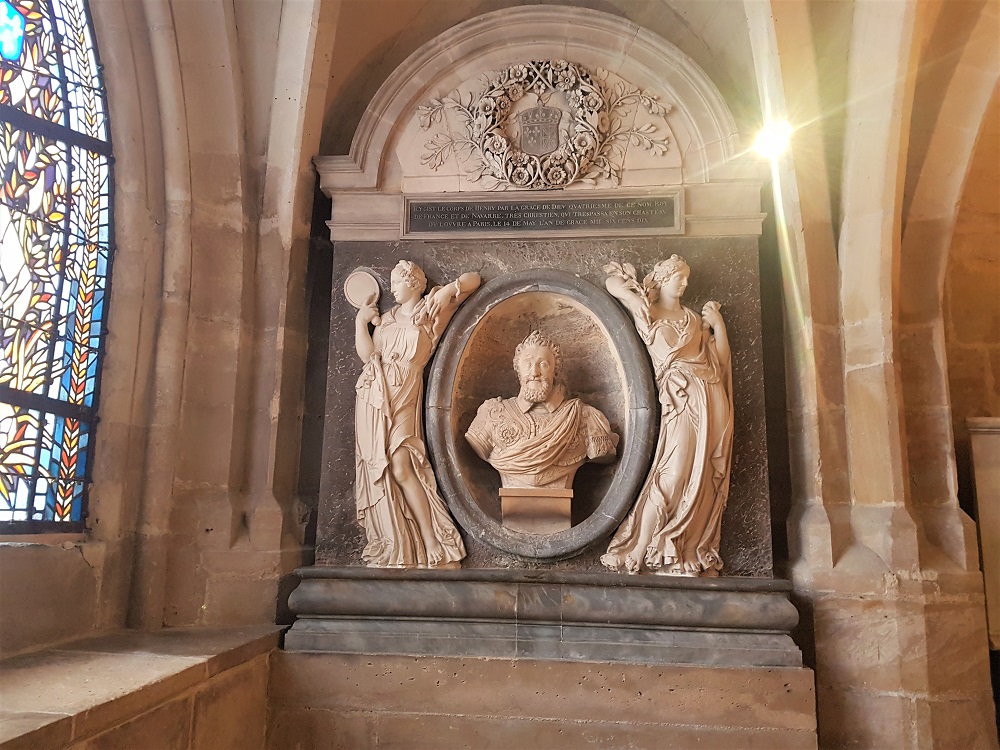
Gruesome legend has it that the basilica was founded in the fifth century when Saint Denis, the first bishop of Paris and patron saint of France, was beheaded in Montmartre and he carried his detached head to the site of what is now Saint-Denis to show his followers where he’d like to be buried.
Two centuries later, Dagobert, king of the Franks, decided to found an abbey on the site and had Saint Denis’s remains interred there. He also became the first French king to be buried in the abbey.
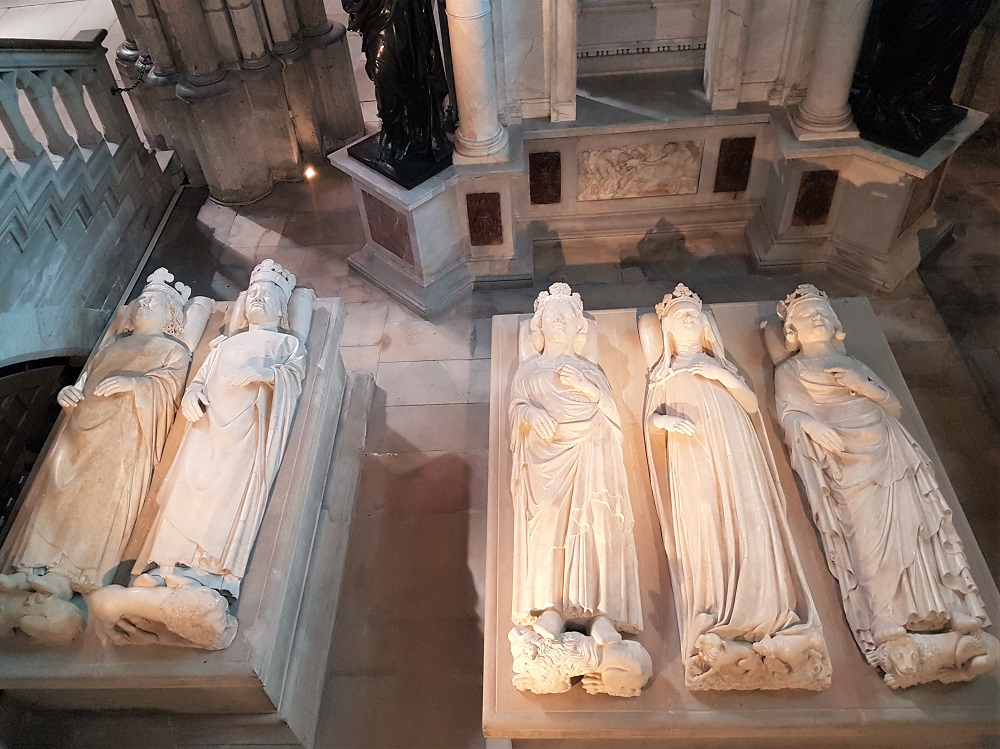
The present day basilica owes its imposing Gothic architectural style to Abbot Suger, the then-Abbot of Saint-Denis, who began rebuilding Dagobert’s abbey in the 1140s.
In 1264, Louis IX had the bones of 16 former French kings and queens moved to the basilica, and from then on, Saint-Denis became the burial place for the French royal family.
It was a tradition that lasted until 1824 when Louis XVIII became the last French monarch to be laid to rest there.
While most of France’s kings were crowned in the great cathedral at Rheims, their wives were crowned at Saint-Denis and the basilica has played host to the coronation of every French queen, as well as the odd king (Pepin the Short was crowned in Saint-Denis in 754).

Unsurprisingly given its royal connections, the cathedral (Saint-Denis became a cathedral in 1966) is a grand affair inside, boasting high-vaulted ceilings, elegant cream-coloured stone walls and purple-hued stained glass windows.
Elaborate cenotaphs dedicated to various kings and queens fill the aisles and I stopped to marvel at their white-marbled splendour as I looked around the cathedral and made my way down to the crypt.

The cold, dark crypt (above) was deserted when I entered and I was surprised by how much lay beneath its vaulted ceilings.
To the right of the entrance was the small Chapel of the Princes, home to the tiny coffins of a number of princes and princesses who’d died in childhood.
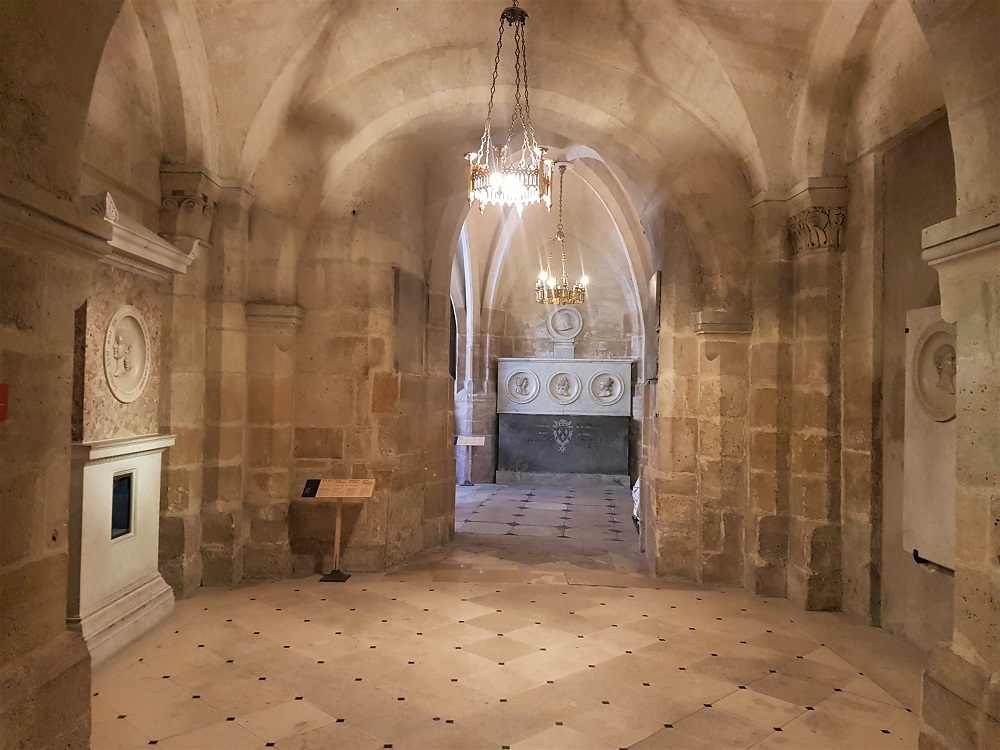
Beyond it lay the Bourbon chapel (above), which was filled with cenotaphs dedicated to members of the Bourbon dynasty, including Louis XIV and Henri IV.
In the centre of the crypt, there was an archaeological area showcasing the little that remained of the earlier abbey, as well as six black gravestones belonging to Louis XVI, Marie Antoinette and Louis XVIII, among others (below).
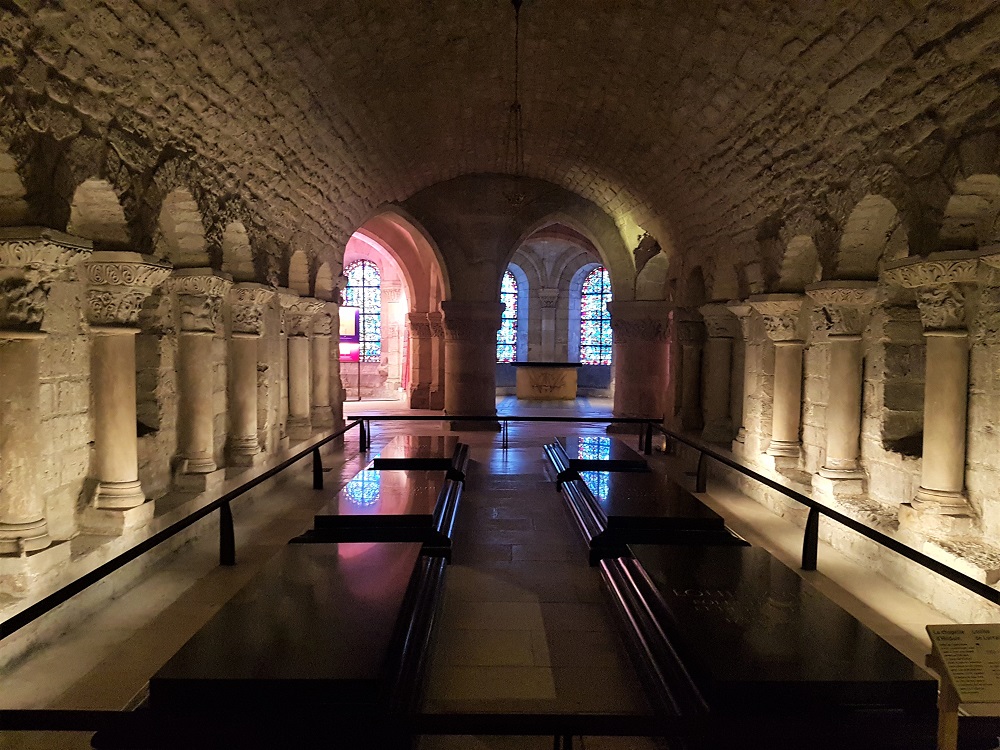
Neither Marie Antoinette nor Louis XVI were originally buried in Saint-Denis, as their bodies were initially dumped in the vicinity of the Madeleine Church in Paris.
When Louis XVIII became king, he ordered a search be carried out for their remains and their unearthed bones were brought to the basilica in January 1815.
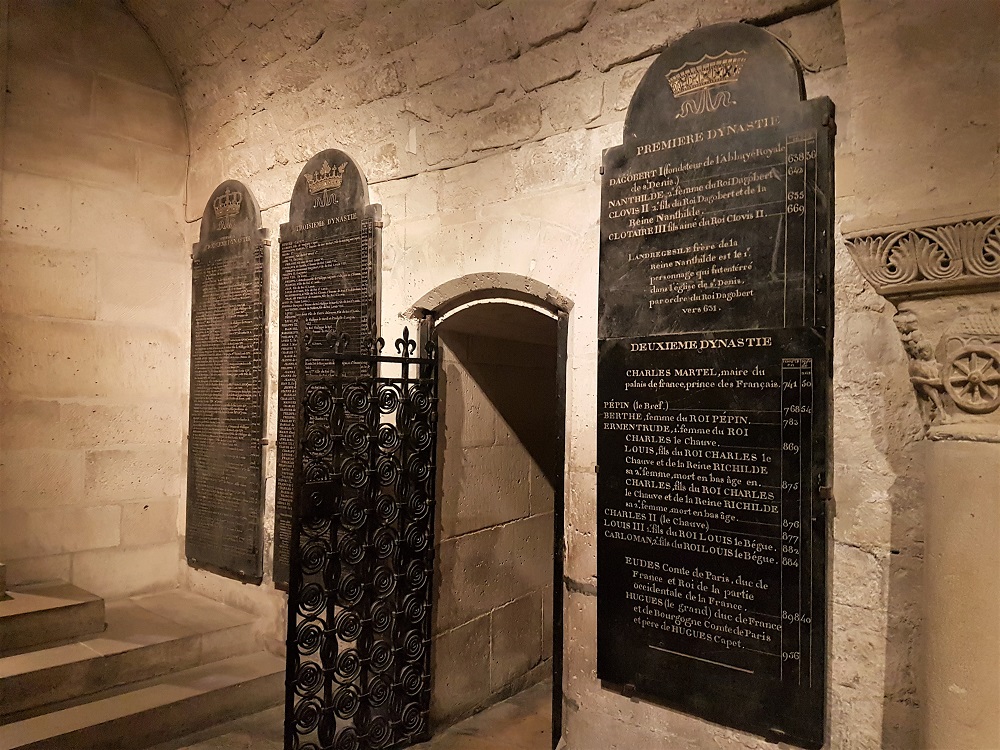
Near the stairs leading out from the crypt was the royal ossuary (above), where the bones of the royal family were interred in the 19th century.
The basilica’s royal tombs were exhumed during the French Revolution and the remains thrown into a series of mass graves.
When the Bourbon family was restored to power in the 1810s, the mass graves were opened, but only three of the 150-or-so bodies remained partially intact, so the mixed-up bones were laid to rest in the basilica’s ossuary.
I’m glad I finally made it to Saint-Denis and was pleased to find that after 20-odd years of wanting to visit, it didn’t disappoint.
It’s a spectacular cathedral – the Gothic architecture is beautiful – and a fascinating, if somewhat macabre, slice of French royal history.



